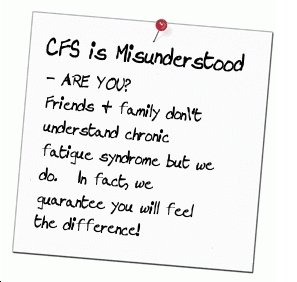How Do You Create A Caloric Deficit?
Losing weight is a challenging process, and there’s no one-size-fits-all strategy for doing it successfully. We all have different bodies which respond to calories and exercise in unique ways.
This means that while a weight loss strategy might work for your friend, the same plan won’t necessarily work for you. However, most experts agree it’s easier to lose weight when we create a caloric deficit. This means you burn more calories than you consume.
Like many aspects of weight loss, the type of caloric deficit you should create will differ depending on your situation.
However, calculating the ideal caloric deficit for your body could be a good way to boost your overall fitness strategy.
A caloric deficit happens when you burn more calories than you eat per day. When you use more energy than you consume, your body leverages “energy stores”, or fat deposits within your body.
The biggest challenge in developing a caloric deficit is determining how many calories you need to eat to both maintain and reduce your weight.
The 2020-2025 guidelines recommend that people
assigned male at birth (AMAB) eat at least 2,000 to 2,400 calories per day. Alternatively, people assigned female at birth (AFAB) can maintain their weight with between 1,600 and 2,000 calories per day.
When creating a caloric deficit, the aim is to drop your calorie intake to lower than your recommended allowance, without putting yourself in danger. For instance, if you want to drop 1 to 2 pounds per week, you can reduce your caloric intake by around 500 to 1000 calories.
What Is A Caloric Deficit?
However, dropping lower than a certain level with your caloric intake can be dangerous. AMAB individuals need at least 1,500 calories and AFAB need 1,200 to stay healthy.
Once you have a clear insight into how many calories you need to maintain your base weight, you can begin to develop your personal strategy for creating a caloric deficit.
A single pound of body fat contains around 3,500
calories, which is why it’s recommended to lower your calorie intake by 500 calories per day to lose a pound.
However, there are more ways to create a caloric deficit than simply adjusting your diet. The process generally involves a combination of both diet and exercise.
For most people, it’s helpful to begin the journey to weight loss by adjusting their eating patterns, focusing on nutritional foods without a huge number of calories.
How Do You Create A Caloric Deficit?
Grains, vegetables, fruits, and lean proteins are excellent sources of calories. Alternatively, trans fats and sugary drinks are “empty” calories, which don’t do much for your health.
Adding exercise to your routine increases your caloric deficit without damaging your nutritional intake. The more you exercise, the more calories you’ll burn, creating a wider deficit.
Even moderate exercise, such brisk walking, biking, or actively playing with children can make a huge difference to your weight loss.
While cutting calories is valuable for weight loss, it’s not the only consideration you’ll need to make. Physical activity is a significant factor as well.
Not only does physical activity increase your caloric deficit, it also helps reduce blood pressure, minimize stress, and boost your health in a variety of ways.
What To Remember When Creating A Caloric Deficit
Whether exercising, dieting, or a combination of both strategies, it’s important to remember that too much of a caloric deficit can be dangerous. You shouldn’t reduce your calories by more than 7000 per week in general, without guidance from a doctor.
No matter how much you want to lose weight, cutting too many calories at once can lead to a huge range of health problems, including:
♦ Malnutrition: This can cause bone and muscle mass
♦ Energy deprivation: Your brain and body needs
consistent energy to survive
♦ Reduced metabolism: Your metabolism can slow
when exposed to fewer calories
♦ Gallstones: Fewer calories can also increase your risk of developing gallstones
♦ Mental health issues: People with a significant
calorie deficit can suffer from depression and anxiety.
Other issues can include everything from constipation to feeling sick frequently or having trouble sleeping. There are also specific risks to cutting calories for people withncertain conditions, like anemia, low blood sugar, or
diabetes.
Creating a calorie deficit can be helpful if you’re trying to lose weight fast. You can reduce your calories consumed per day, and use exercise to boost your caloric deficit.
However, remember not to focus on calories too much.
Living a healthy life involves a careful balance of diet,
exercise, and good mental health practices. Calorie deficits
can’t do everything on their own.
Do You Need A Caloric Deficit?
Creating a calorie deficit can be helpful if you’re trying to lose weight fast. You can reduce your calories consumed per day, and use exercise to boost your caloric deficit.
However, remember not to focus on calories too much.
Living a healthy life involves a careful balance of diet, exercise, and good mental health practices. Calorie deficits can’t do everything on their own.
Learn more about your health online when you read the rest of our information here about: Weight Loss - free online health guide and also download the free health report available there!
Warren Tattersall has been a full time nutritional consultant for over a decade and works with people all over the world to help them improve their health, increase their personal energy levels and to use supplements to assist with diet related health issues.
Just send him a note on the form here - Contact Us - to request a personal no obligation one-on-one consultation with Warren
New order website for Australian customers:
For all the subscribers that don't want to talk to anyone, just want to buy their products direct, I'm creating these websites that process orders for you once you register with them.
The Australia GoHerbalifeSite is the first one completed, other countries will come along soon...
Australian customers: Click this link or tap on the banner below to check it out and get registered to place your orders... and remember your 15% discount code: HLIntro15

Did you find this post fun, informative and useful? If so, please share it with others!
If you have a comment, question or suggestion, please leave a comment below!
the A to Z directory of dealing with Health Problems & Self Care Strategies for natural remedies to your health issues.

Subscribe to get your weekly "Health Success Magazine" with a new complete & comprehensive Health Report in every edition!

to “Your Health Success”
our weekly F’R’E’E’ Newsletter
If you would like a free no-obligation private consultation or to contact Warren Tattersall for more information, please click here >> Contact Us

Click the books above to learn more about how we treat CFS naturally, to get your life back!
You will find many assorted Health Reports available for download free to you on this website!
Our free Health Success Reports are each available for you to download when you subscribe to receive them and their 7 part eCourse.
You can unsubscribe at any time, but we are sure you will want to receive all the email lessons of these informative ecourses.
Read more HERE to select the REPORT subjects of most interest (or concern) to you.









